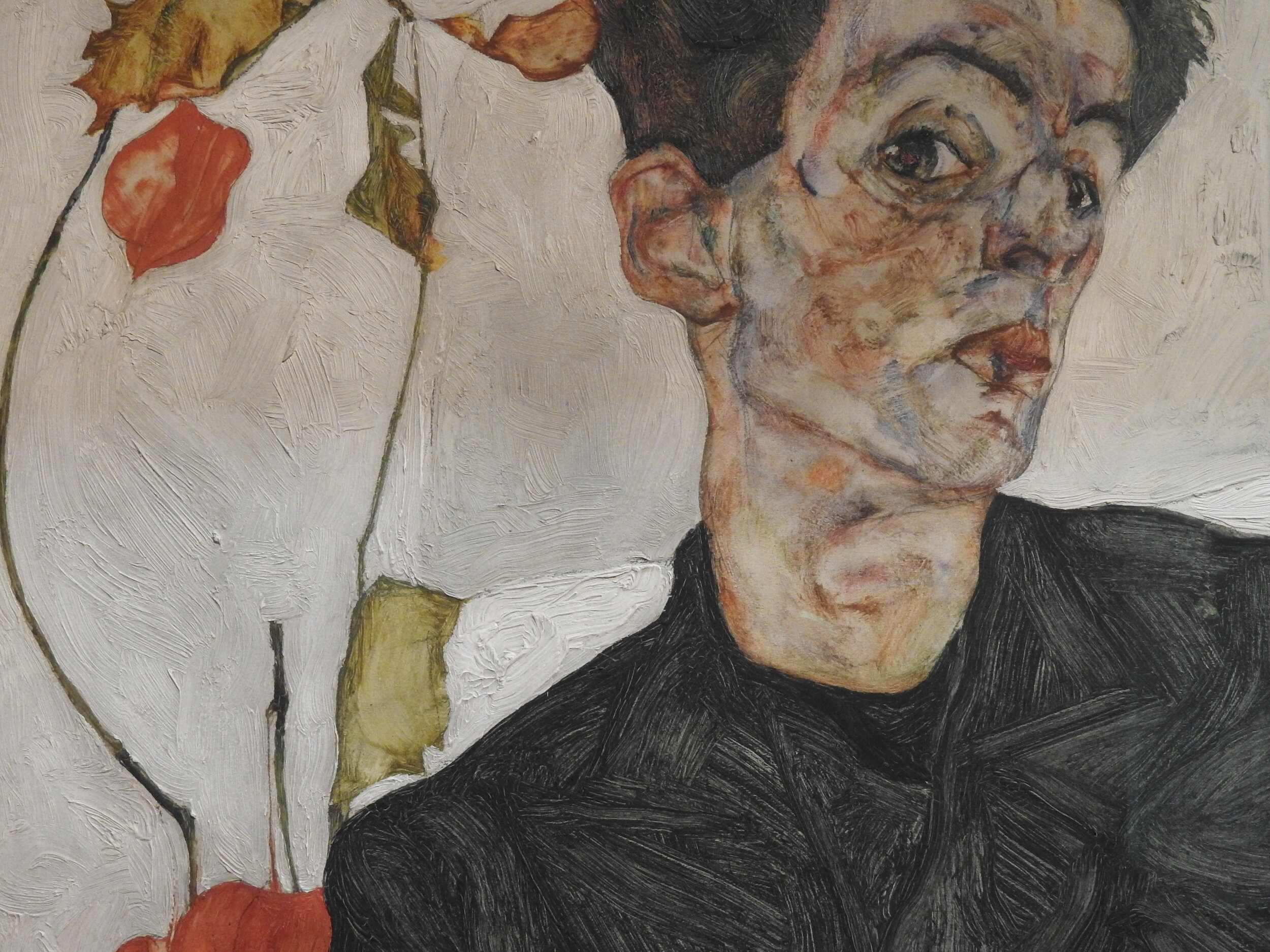
Self-Portrait with Chinese Lantern Plant, Egon Schiele, 1912. Leopold Museum, Vienna. Photo by Renée DeVoe Mertz.

Detail of the metal and glass embellishments applied to the wall in “Hostile Forces” section of Gustav Klimt’s Beethoven Frieze (1902) on the walls of the Secession building, Vienna. Photo by Renée DeVoe Mertz.
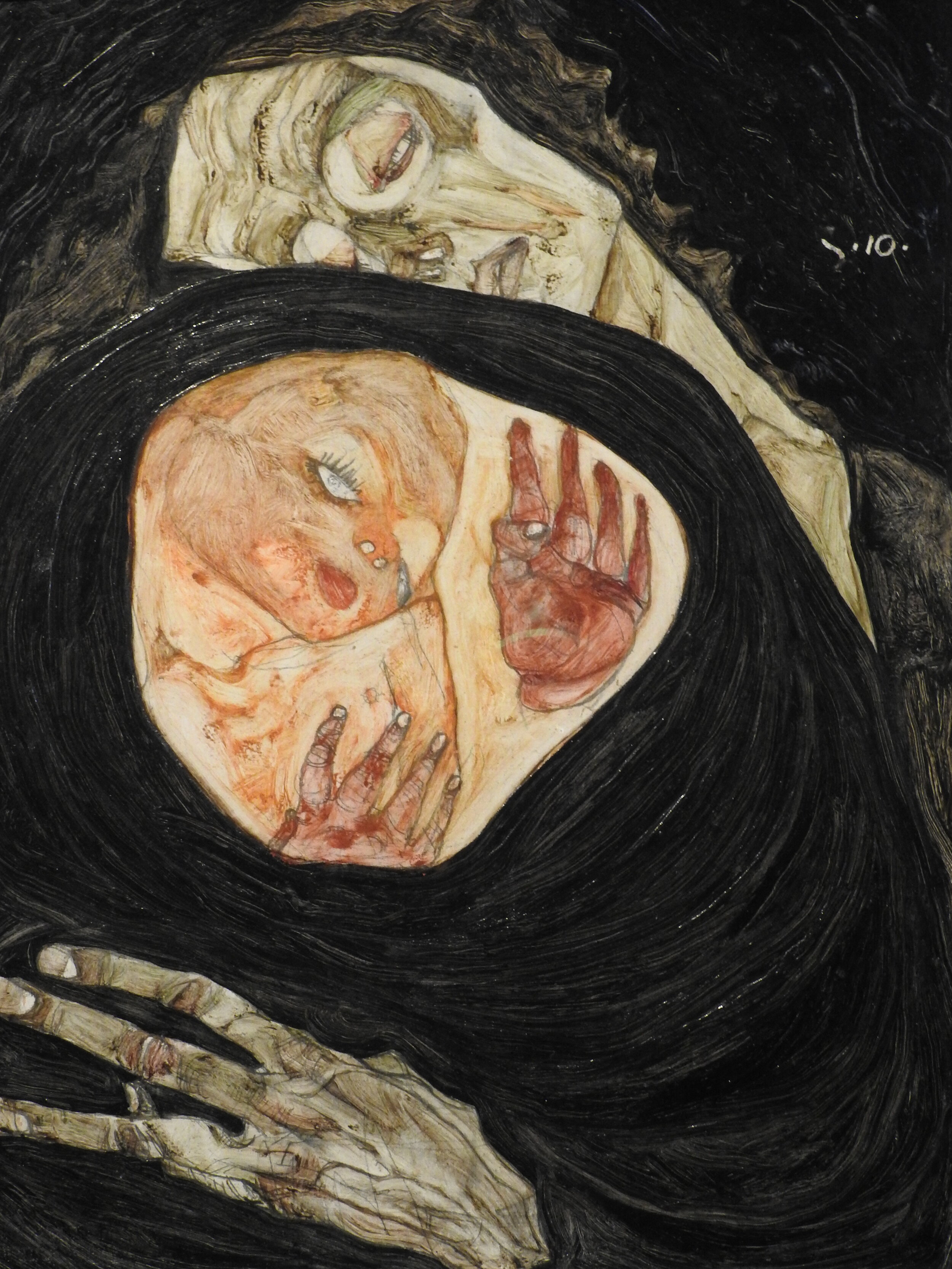
Dead Mother, Egon Schiele, 1910. Leopold Museum, Vienna. Photo by Renée DeVoe Mertz.
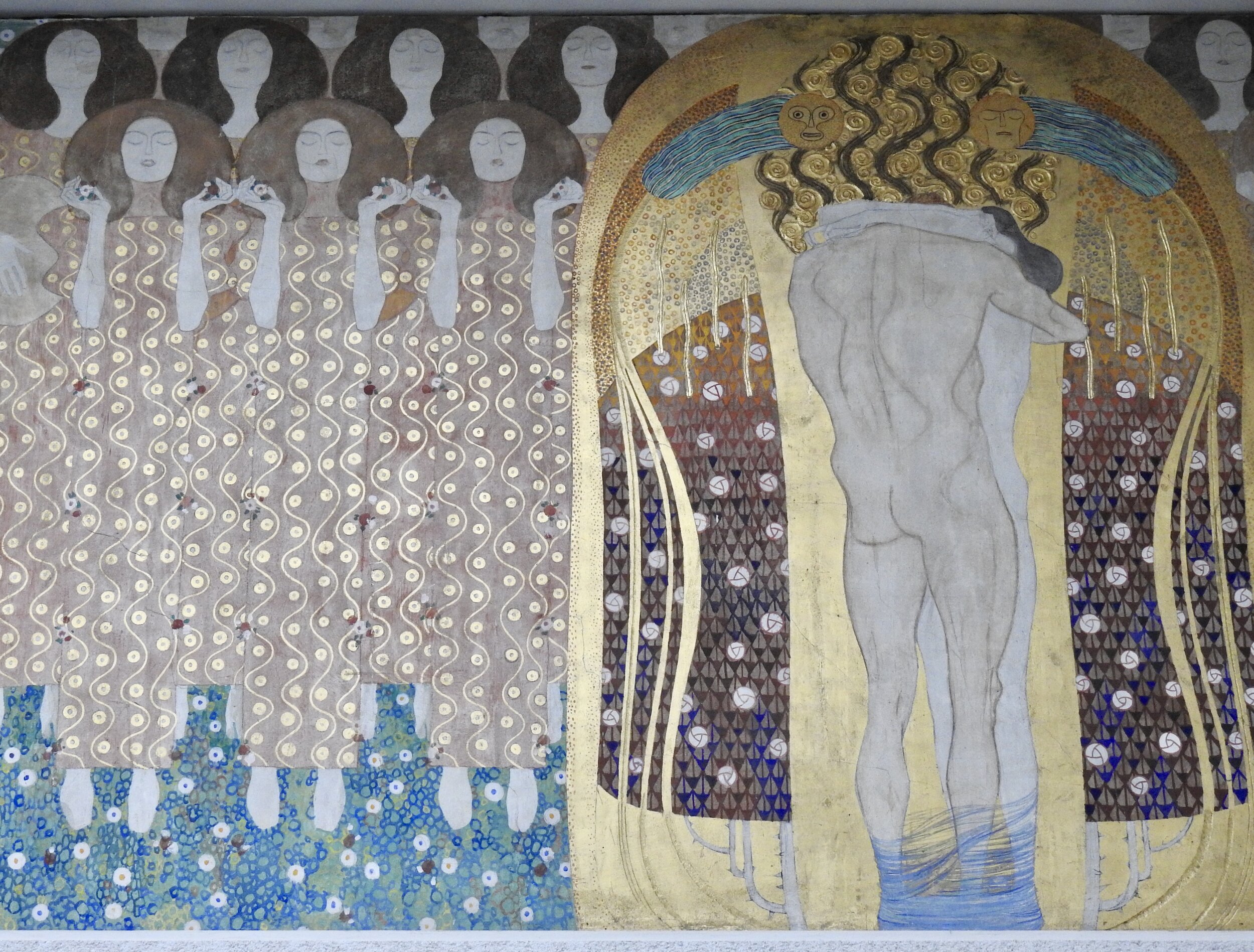
“Choir of Angels” and “Embracing Couple,” part of Gustav Klimt’s Beethoven Frieze (1902), painted on the walls of the Secession building, Vienna.
Flatness conjured through the use of pattern and gold leaf is a hallmark of Klimt’s mature work, and can be seen here in the choir of angels, as well as in the landscape surrounding the embracing couple. In portraits or other figurative paintings, these areas of pattern create a stark contrast with the more nuanced and naturalistically depicted areas of a subject’s skin, usually the face and hands. Although similar visual distinctions are evident throughout the Beethoven Frieze—between the bodies of the couple and the surrounding landscape, for instance—Klimt also took advantage of the properties of the wall itself to create more literal contrast between the smooth fields of physical flatness and even subtle areas of texture. Here, the viewer’s eye is drawn not only to the mass of gold, but also to the visual relief created by the raised circles of the Sun’s head and the score lines in the gold leaf framing the couple. Together, the combination of concentrated opulence and texture clearly mark the Sun and his mate as the intended focal point of this section.
Photo by Renée DeVoe Mertz.
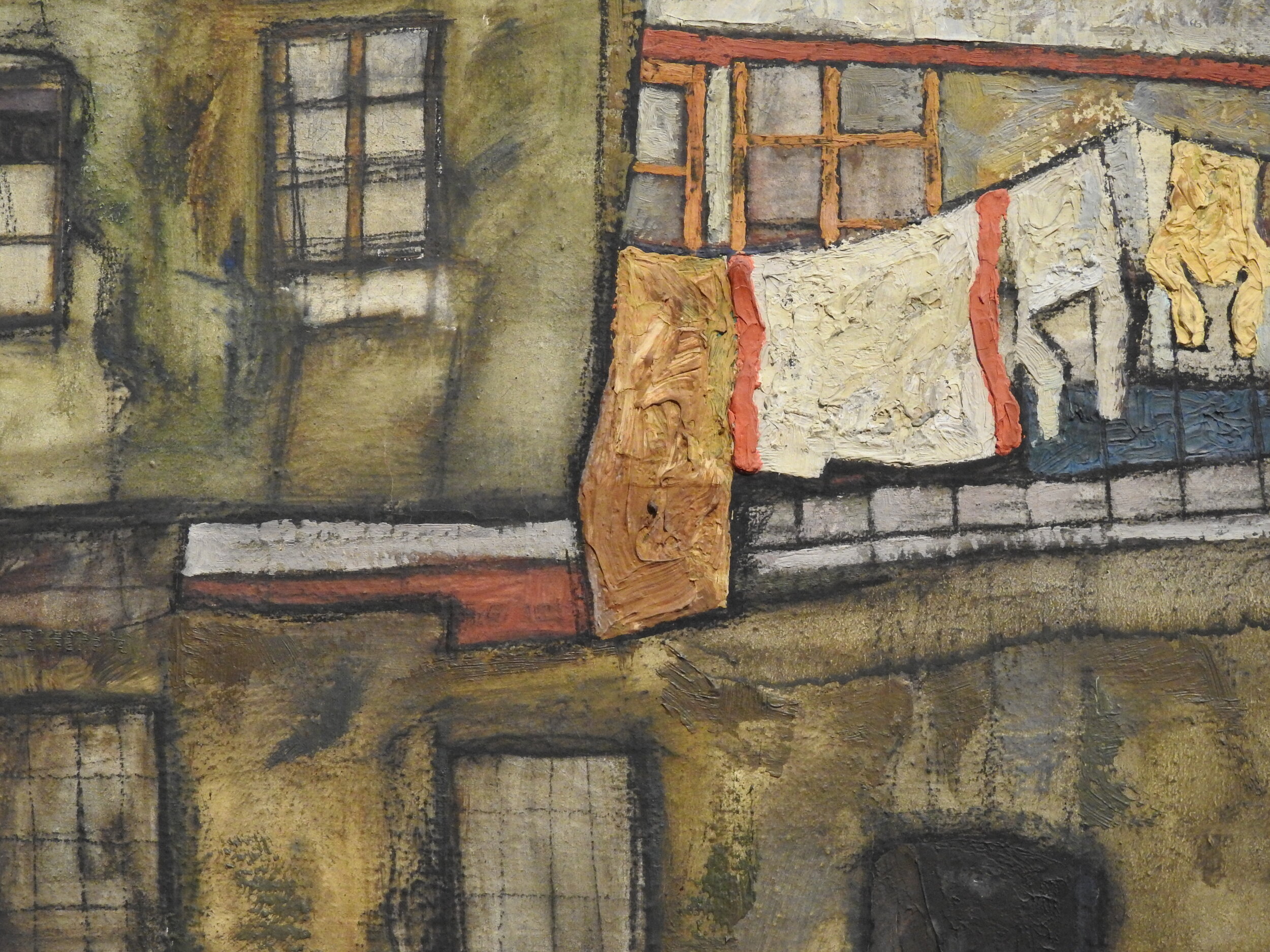
House Wall on the River, Egon Schiele, 1915. Leopold Museum, Vienna. Photo by Renée DeVoe Mertz.

Detail of metal, shell, and glass inlay used in the “Hostile Forces” section of Gustav Klimt’s Beethoven Frieze (1902) on the wall of the Secession building, Vienna. Photo by Renée DeVoe Mertz.

Self-Portrait with Lowered Head, Egon Schiele, 1912. Leopold Museum, Vienna. Photo by Renée DeVoe Mertz.
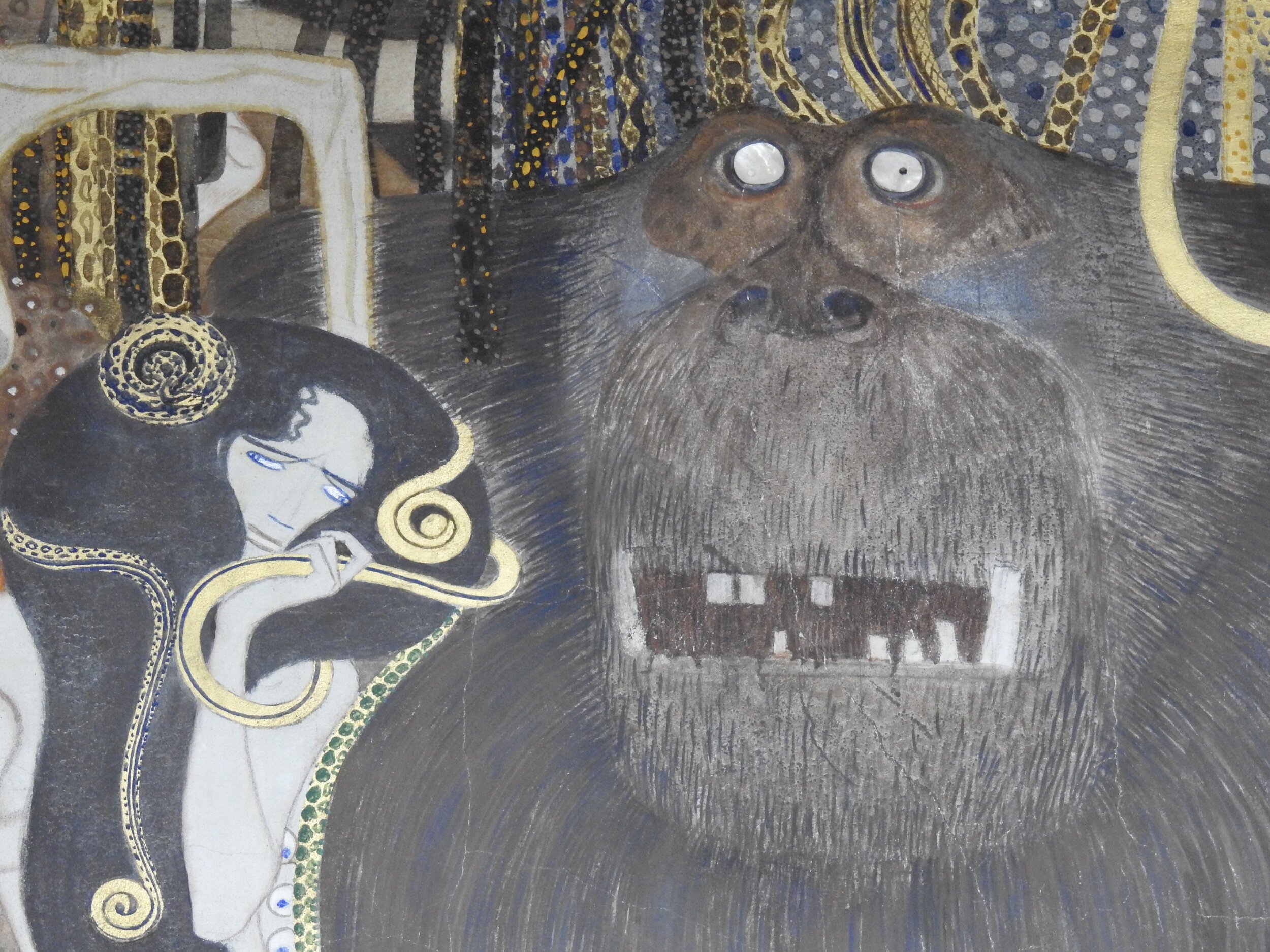
A gorgon and the giant Typhoeus in Gustav Klimt’s Beethoven Frieze (1902) in the Secession building, Vienna. Klimt’s selective use of shell disks for Typhoeus’s eyes makes the giant’s gaze especially eerie. Photo by Renée DeVoe Mertz.

Detail of Self-Portrait with Raised Bare Shoulder, Egon Schiele, 1912. Leopold Museum, Vienna. Photo by Renée DeVoe Mertz.
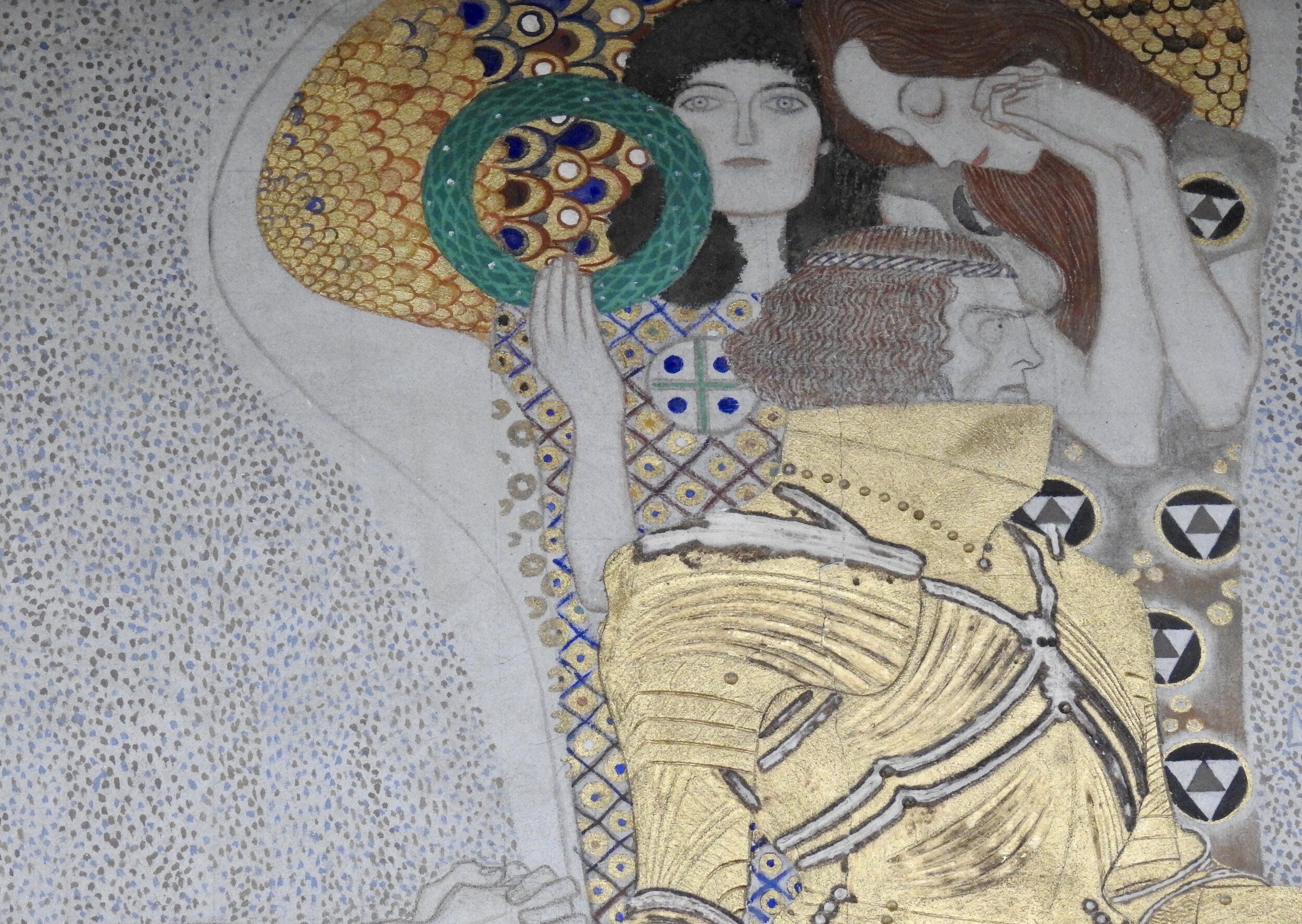
“Knight in Shining Armour,“ part of Gustav Klimt’s Beethoven Frieze in the Secession building, Vienna. Photo by Renée DeVoe Mertz.
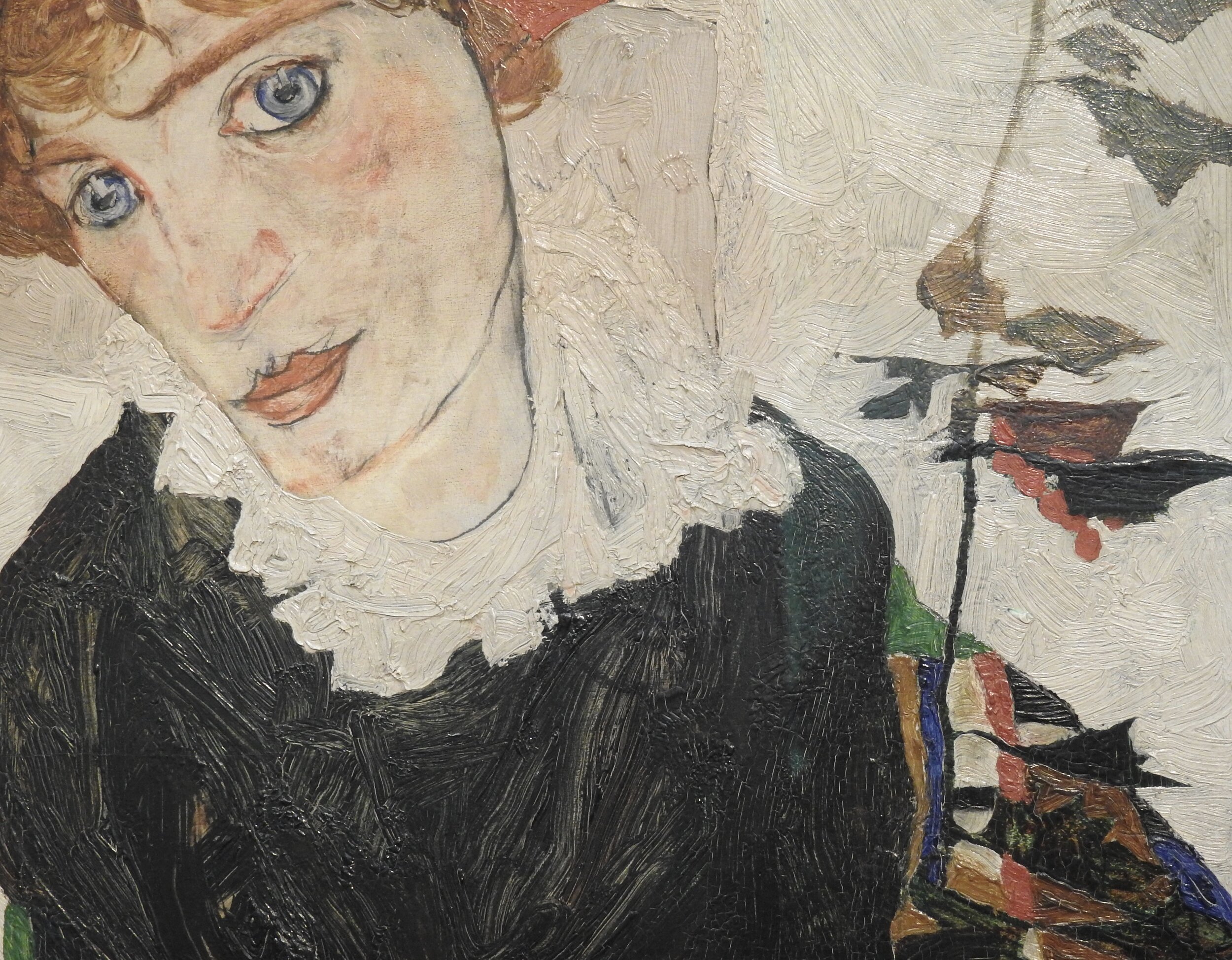
Portrait of Wally Neuzil, Egon Schiele, 1912. Leopold Museum, Vienna. Photo by Renée DeVoe Mertz.